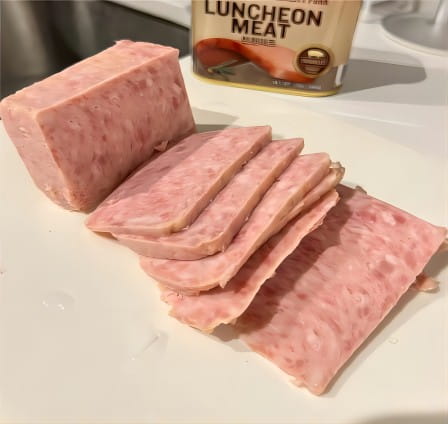The necessity of food preservation
Society and food present various negative impacts of food spoilage and deterioration. Food preservation is a highly important process that enjoys priority in the firms. Spoilage leads to the food to undergo significant alterations as to its sensory characteristics including color, taste, smell and texture, making it unattractive and reducing its nutritional value. In addition, spoilt food serves as a breeding ground for harmful microorganisms or bacterial metabolites which are a danger to human health and may cause severe foodborne diseases, food safety incidents, or poisoning.

Food spoilage is another factor which is associated with pest infestation as a result of wasteful consumption of foods that is brought about as result of food spoilage, and therefore, this leads to economic losses and also hazardous environmental effects. It can also destroy consumer trust and put the producing companies into an image crisis condition to the extreme level. Failure of food spoilage and deterioration prevention is considered the cornerstone of food safety, quality, sustainable business process, and societal welfare.
The Common Causes of Food Spoilage and Deterioration
- Microbial Activity: Food spoilages are caused by primarily microorganisms such as bacteria, fungi, and yeast. Under optimal conditions, they multiply on a massive scale and metabolize protein, fats and carbohydrates to various spoilage products, which cause food spoilage or food poisoning.
- Enzymatic Activity in Food: Food has enzymes in it, which in the right place and right time, also break down the nutrients producing spoilage products. In particular, lipase decomposes fats into free fatty acids causing rancidity. Polyphenol oxidase in the food oxidizes the polyphenolic compounds causing discoloration.
- Physical Factors: Physical parameters like temperature, humidity, and light have an impact on food spoilage. The temperature is one of the most important factors affecting the growth of microbes; at higher temperatures, spoilage progresses faster. Microbial proliferation depends on humidity levels, and higher humidity triggers multiplication. Enzymes in food can be activated by light exposure to facilitate spoilage.
Food Preservation Importance
- Ensuring Food Quality and Extending Shelf Life: Preservation makes viable the uses of food that helps in preventing spoilage and promotes food quality during storage and distribution, thus, making it durable. This enables the consumer to get fresh and high-quality food and cuts down on the wastage of food.
- Ensuring Food Safety and Preventing Diseases: Preservation methods are inhibitory to pathogenic microorganisms that reduce bacteria and pathogens in food. This reduces the risk of foodborne illnesses, leading to food safety and preservation of consumer health.
- Reducing Resource Wastage and Loss: Losses from food spoilage and damage are substantial, including ingredients, energy, and water. It reduces waste rates, which means that resources are not depleted and sustainability is supported.
- Meeting Transportation and Storage Needs: Preservation turns food into an ideal product for long-distance transportation and storage, particularly in such a global market. Food is capable of moving across boundaries, satisfying various consumer needs and staying fresh.
- Safeguarding Consumer Rights: Preservation guarantees that food acquired by consumers meets safety and quality requirements, which leads to consumer confidence, rights protection and access to top-level products.
Common Food Preservation Methods
Physical Methods
- Low Temperature: Temperatures associated with freezing and refrigeration can retard microbial growth and food oxidation, thereby, increasing shelf life.
- Light Avoidance: Direct sunlight on food can cause photo-induced food spoilage prevention.
- Humidity Control: Keeping correct humidity levels ensures the food doesn’t get too dry or too damp, thus preserving its freshness.
Chemical Methods
- pH Adjustment: Changing the acidity or alkalinity (pH) of food alters the microbial growth environment impeding their growth.
- Addition of Preservatives: Preservatives, such as some sorbates and salts, benzoates and salts, calcium propionate, etc., that are adding chemically can inhibit the microbial growth and oxidative reactions, and therefore prolong the shelf-life of the food.
Biological Methods
- Heat Treatment: Heating food using ways like cooking, pasteurizing, or canning can eliminate microorganisms but maintain safety and quality of food.
New Technologies
- Modified Atmosphere Packaging (MAP): Modification of gas composition inside the package, usually decreases oxygen level, averts oxidative reactions, and therefore, prolongs the shelf life of food.
- Vacuum Packaging: A vacuum environment makes sealed food have low oxygen exposure, which prevents oxidation and microbial contamination, as well as extends the shelf life.

Preservation Methods Mostly Involve Chemical Methods
Generally, chemical preservation solutions can reduce the bacteria, molds, or yeast shorten time more effectively than other methods. They boost the effective life cycle of food to be greater than would have been achieved with the traditional preservation method causing the food manufacturers in the distribution pipeline to have fewer losses/wastes. The effect of chemical methods on microorganisms is nonspecific, i.e. it is effective against microorganisms from various groups. This makes them suitable for different food species.
Nevertheless, these approaches also have their distinctive indications as well as applicability such as low-temperature processing or vacuum packaging. They are only suitable for selected kinds of food due to other types of food not accommodating those methods. The use of chemicals can be devised easily with the right dosage and concentration to achieve the conservation effect as prescribed by production qualities. Chemical preservation is among the least expensive of all preservation methods used today.
- PH Adjustment:
This acidification stands at the forefront of chemical preservation. While preservatives like salt come with sodium, food-grade acids such as lactic acid, acetic acid, and citric acid, are utilized to reduce the pH of the food to lower than 4.0, which is exceedingly harsh for microorganism growth. Certainly that method, however, also brings in a great number of limitations.
- Addition of Preservatives:
Sodium and potassium sorbate, sodium benzoate, calcium propionate, and other chemical preservatives, are examples of some of the common chemical preservatives. For example, employ a limited of additives and achieve the equilibrium of antibacterial.
- Ascorbic Acid (Vitamin C):
Vitamin C, together with other antioxidants, may be responsible for the preservation of meat, fruits, vegetables and similar foods that are added with antioxidants to prevent the oxidation of nutrients.
- Food-Grade Sulfur Dioxide:
Sulfur dioxide is the agent of choice for mold and yeast problems thus; it is the correct agent for additional preservation in products like wine and dried fruits.
The use of preservatives has become a big problem in our time for food companies. Moderately use conservatives, if they have the goal, spoilage of food can be delayed, shelf life extended and reducing waste will be one of the goals. Yet, some concerns come to mind about the safety of preservatives and too much of which may increase the possibility of health risks to people. It is the job of food companies to create a positive mix of nutritional value and security together with the consumer’s desire to avoid chemicals and other additives.
Mondstar being the key participant in the preservative field has its focus on food safety and consumers’ health. We recognize the importance of rational and effective use of preservatives in the case of food preservation to keep product good qualities high. Together with our clients, send the email to [email protected], the preservatives applied in producing the food will be turned into a stronger ability to suit peoples’ needs for these three aspects: nutritious, high quality, and safe food condition.
Furthermore, we aim to assist the food industry in finding the best route on the way to balancing efficacy and safety, to support the rational use of food additives in particular, and to do our best to improve the preventive world of food safety for this industry.
